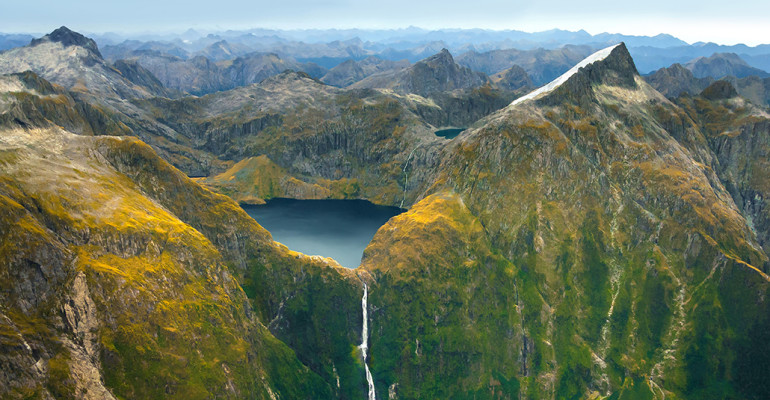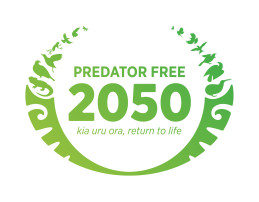Biosecurity Technology
The Biosecurity Technology Spearhead research project is developing a swarm of smart networked sensors that will use Artificial Intelligence to detect the last predators in New Zealand’s vast landscapes.

Team
Spearhead Co-Leader: Dr Katerina Taškova - University of Auckland
Spearhead Co-Leader: Dr Tara Strand - Scion Research
Chaz Doherty - Lincoln Agritech
Greg Mason - Victoria University of Wellington
Snapshot
In collaboration with New Zealand’s Biological Heritage | Ngā Koiora Tuku Iho National Science Challenge, SFTI’s Biosecurity Technology Spearhead Research Project was developed through a collaborative Mission Design process with a multidisciplinary group of experts to identify a focus for the research with the highest potential impact for Aotearoa.
This led the team to a research proposal to develop technology to identify the last remaining predators in New Zealand’s vast landscapes.
The team will build on existing cutting edge science in the areas of sensors and robotics, and look to further new science to create a swarm of smart sensors that can work together in rugged landscapes to seek out these final threats to New Zealand’s Predator Free 2050 goal
Through a series of wānanga, the project will identify ways in which Mātauranga Māori can inform the development of Artificial Intelligence (AI) plus how the sensors and robots may look and feel.
An advisory panel is being established to provide guidance to the research team on the unique NZ context.
In 2022 the Biosecurity Technology Spearhead Research Project received $1.2 million of co-funding from Predator Free 2050 in recognition that this research project team could prove to be key to achieving a Predator Free Aotearoa by 2050
In 2023 the Biosecurity Technology Spearhead Research Project received a further boost towards their ultimate goal with the Bioheritage National Science Challenge co-funding the project with a further $300,000. This collaboration is aimed specifically at developing the models of animal behaviour that will underpin the artificial intelligence
In July of 2020 SfTI in collaboration with New Zealand’s Biological Heritage | Ngā Koiora Tuku Iho National Science Challenge called for expressions of interest to contribute to a Mission Design process for a Biosecurity Technology Spearhead research project. This allowed SfTI to identify a diverse and experienced group of experts to be part of exploratory workshops to identify ways cutting-edge physical sciences and engineering could create new tools to better protect New Zealand from biosecurity threats.
Experts from across Aotearoa's biosecurity and technology space came together, for online and in-person workshops, to map out the problem space. During these workshops the group began to focus on how they could support the goal of working towards a Predator Free NZ. Find out more about these exploratory workshops.
From this group a best in New Zealand team was selected to focus the ideas developed during the Mission Design process into a clear research proposal: Finding the last predator.
The team developed a proposal that identified the potential for high tech science to have a huge impact for Biosecurity Aotearoa by focussing on how to use technology to support our ambitious goal of predator free 2050. After SfTI Board approval this proposal for SfTI’s Biosecurity Technology Spearhead research project was funded $2 million over two years, and will be hosted at the University of Auckland (UoA) and co-led by Dr Katerina Taškova from the UoA Machine Learning Group and Dr Tara Strand from Scion. Dr Strand says:
"We wanted to identify what area of Biosecurity would make the best use of cutting-edge STEM. We focussed on the fact that to eradicate, you must find all predators. Down to zero. Zero is of huge importance in predator management.
“This push for a predator free 2050 is a crazy and ambitious goal. This is New Zealand’s moon shot. The scale is massive, and to achieve this we need to develop new technologies and fast.”
Throughout the Mission Design process it was very clear that not only was biosecurity of critical importance to the Māori Economy, but any technology developed would benefit from the unique combination of Māori philosophies such as kaitiakitanga (guardianship of the biosphere) and mātauranga Māori.
Te Tira Whakamatki Operations Manager and member of the Biological Heritage National Science Challenge team, plus member of the Biosecurity Technology Spearhead Advisory Panel, Tame Malcolm (Te Arawa: Ngāti Tarāwhai, Ngāti Pikiao, Ngāti Ngararanui, Tapuika, Ngāti Whakaue, Ngāti Ruanui), explains how important biosecurity is to Aotearoa New Zealand’s unique economy:
“The Māori economy is between 50 and 60 billion dollars and underpinning all of that is Biosecurity.”
The Biosecurity Technology Spearhead will hold a series of wānanga to explore ways in which Mātauranga Māori can inform the development of the technology. This means not only how the sensors and robots may look and feel, but also the way in which the Artificial Intelligence (AI) is designed.
“It’s important that these robots are acceptable to communities where they will be operating,” said SfTI Vision Mātauranga Theme leader, Dr Katharina Ruckstuhl (Ngāi Tahu, Rangitāne).
The Science for Technological Innovation National Science Challenge Biosecurity Technology Spearhead Project commenced in October 2021.
Project background information
This Mission-led Spearhead Project commenced in October 2021 and will continue for two years to a total of $2M. The project will be subject to a review for further funding available during the National Science Challenges 10-year term, 2014-2024. Find out how we develop our Mission-led projects.

In 2023 the Biosecurity Technology Spearhead Research Project received a further boost towards their ultimate goal with the Bioheritage National Science Challenge co-funding the project with a further $300,000.
